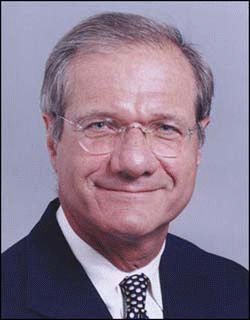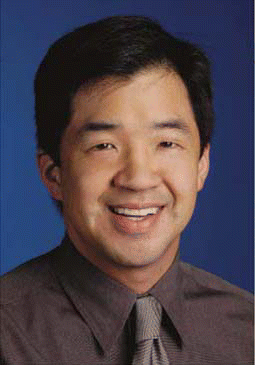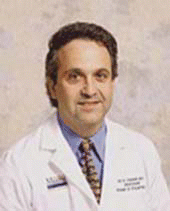CHICAGO—Endoscopic sinus surgery is an approach commonly used by otolaryngologists–head and neck surgeons, but for what indications is it the best technique to use—and how has its use evolved over the years? These are some of the questions addressed by three thought leaders during a panel assembled by the American Rhinologic Society (ARS) here at the Combined Otolaryngological Spring Meetings (COSM).
Explore This Issue
August 2006Moderator and ARS President-Elect Howard L. Levine, MD, of Cleveland Nasal, Sinus and Sleep (Ohio), explained that the panel was convened because, “The Board of ARS wanted to gain an understanding of the things we all do frequently, and whether what we do is evolving—or should we be evolving?”
Indications Past and Present
Panelist James A. Stankiewicz, MD, Professor of Otolaryngology–Head and Neck Surgery at Loyola University Health Systems in Maywood, Ill., began with an overview of recent historical guidelines on indications. “Indications for sinus surgery are divided into relative and absolute indications,” he said. “The objective of this talk is to examine each of these indications and show when surgery has merit.”
In 1997, an American Academy of Otolaryngology–Head and Neck Surgery (AAO-HNS) Rhinosinusitis Task Force came up with this list of absolute and relative indications for surgery:
Absolute Indications for Endoscopic Sinus Surgery
- Tumor
- Complicated acute rhinosinusitis
- Massive nasal polyposis/choanal polyp
- Failed sinus surgery
- Mucocele
- Fungal mycetoma
- Allergic fungal sinusitis/polyps
- Encephalocele
- Cerebrospinal fluid leak
Relative Indications for Endoscopic Sinus Surgery
- Chronic rhinosinusitis failing medical therapy
- Headache
- Recurrent acute sinusitis
- Epistaxis
- Nasal polyps
Then in 1990, the First International Conference on Sinusitis Disease was held. At that time, sinusitis was seen as an infectious disease. The AAO-HNS clinical indicators delineate the following maximal medical therapy for chronic rhinosinusitis:
 Dr. Howard L. Levine moderated a session on ‘Indications for Endoscopic Sinus Surgery,’ assembled by the American Rhinologic Society.
Dr. Howard L. Levine moderated a session on ‘Indications for Endoscopic Sinus Surgery,’ assembled by the American Rhinologic Society.- Four weeks or more of treatment;
- Decongestants;
- Topical steroid; and
- Possibly oral steroid.
If symptoms are persistent after medical therapy, evidence for disease is explored via endoscopy or CT scan, possibly followed by surgery.
The AAO-HNS task force updated these indications in 2004, stating that chronic sinusitis is an inflammatory disease, and may be a systemic disease. “So, is new therapy necessary, given that we are dealing with an inflammatory disease?” asked Dr. Stankiewicz. “This new knowledge of the etiology of chronic sinusitis requires a re-thinking of our relative clinical indicators for surgery.” Since chronic sinusitis is an inflammatory, perhaps systemic disorder, the use of anti-inflammatory medication plays an important treatment role prior to surgery. Now medical therapy may include:
- Burst/taper oral prednisone;
- Topical steroids;
- Decongestants;
- Antibiotics if purulence is present;
- Possibly anti leukotrienes;
- Possibly anti-immunoglobulin E; and
- Possibly antifungals.
Issues that still require resolution include the timing of a post-treatment CT scan; the course of action if the patient’s symptoms improve but the disease is still present; a comparison of instrumentation-powered surgery versus balloon sinuplasty; and much more.
Surgery for Minimal Disease
Peter H. Hwang, MD, Associate Professor of Otolaryngology–Head and Neck Surgery and Director of the Stanford Sinus Center at Stanford University School of Medicine (Calif.), presented information on indications for surgery when minimal disease is present. “Surgery for minimal disease is a controversial area,” said Dr. Hwang. “It’s driven by anecdotal experience and personal opinion.”
Recurrent acute rhinosinusitis (RARS) is one such disease. “Many of these cases are asymptomatic,” explained Dr. Hwang. “They can require multiple onsets.” CT scans done between exacerbations may be negative; this does not exclude a diagnosis of RARS. Establishing a diagnosis in these cases can take months or even years. “There is very limited data available for outcomes” in cases of RARS, said Dr. Hwang. Unanswered questions on RARS include: What is the optimal medical therapy? Is there a threshold number of episodes per year that would justify surgery? What is the optimal timing of radiologic evaluation? and, perhaps most importantly, Who benefits from surgery?
“Surgery for minimal disease is a controversial area. It’s driven by anecdotal experience and personal opinion.” – Peter H. Hwang, MD
Barosinusitis is another minimal disease, often but not always found in patients with chronic sinusitis. “There is a potential role for surgery in negative CT barosinusitis,” said Dr. Hwang. There are very limited case reports available, all reporting surgical success.
Controversy over Headaches
Contact point headache is more controversial; “Is it real or mythical?” asked Dr. Hwang. “The International Headache Society doesn’t believe in it.” However, there is a theory that mucosal contact leads to elaboration of substance P, which may lead to stimulation of afferent c pain fibers and local mucosal inflammation with exacerbation of the contact area. Contact point headache presents as self-diagnosed sinusitis that is unresponsive to antibiotics. It typically has a negative CT scan and can be partially relieved with decongestants and steroids.
“For your patients, I encourage you to proceed with caution and rule out other causes of headache,” said Dr. Hwang. “The majority of these patients will benefit from medical therapy.”
Finally, Dr. Hwang addressed CT-negative chronic sinusitis. “This is the most controversial area,” he said. “Some wonder if this entity really exists. And if so, is it surgically amenable? I’m not here to argue the point of its existence…” He went on to say that he found only one study where patients were treated with a normal CT scan and normal endoscopy.
Dr. Hwang concluded, “For patients who have ‘minimal disease,’ we need to make sure we make the correct diagnosis. We have to understand that a CT scan may not show the whole picture of health.” He stressed, “Surgery should be a rare event.”
Surgery for Advanced Disease
Roy R. Casiano, MD, Associate Professor of Otolaryngology at the University of Miami School of Medicine (Fla.), then covered indications for endoscopic sinus surgery in advanced disease, asking, “How much surgery is enough?”
For diseases such as chronic sinusitis that is unresponsive to treatment, allergic fungal sinusitis (AFS), cystic fibrosis (CF), and nasal polyps, Dr. Casiano said, “I will try to address the questions that keep lingering.” These questions surround issues like the timing and degree of surgery after medical therapy, the role for “small-hole” surgery or balloon sinuplasty in these patients, the necessity of computer navigation, and when advanced or extended procedures are called for.
Addressing the timing and degree of surgery, Dr. Casiano said that surgery can improve certain symptoms, including nasal obstruction, headaches, and infection. Surgery may be indicated when the endoscopic follow-up correlates well with the CT scan, but not the symptoms—and some systemic disease may expedite the need for surgery.
Since chronic sinusitis is an inflammatory, perhaps systemic disorder, the use of anti-inflammatory medication plays an important treatment role prior to surgery.
Dr. Casiano stressed that for patients with advanced disease, “Patient expectations have to be really clear. Before you operate, they have to understand what they’re going to gain, and understand that they have an ongoing disease.” He warned that a certain percent of these patients won’t see any improvement in their symptoms, despite the best surgery and medical therapy.
Role of New Technologies
As for small-hole surgery or balloon sinuplasty, Dr. Casiano said, “Obviously, this is very new technology, and there is no current evidence for balloon procedures in hyperplastic disease. Therefore, there’s no comparison to established techniques.” He added that these new techniques are highly unlikely to be effective in AFS, CF, or other chronic hyperplastic conditions, especially where dependent sinuses necessitate removal of thick tenacious secretions or soft tissue. However, they may be effective in addressing limited ostiomeatal complex polyps with limited to no mucosal disease of the dependent sinuses.
“[Computer navigation is] a great teaching tool, but it should not be necessary to determine the location of the maxillary, ethmoid, and sphenoid sinus in an otherwise uncomplicated sinus case.” – —Roy R. Casiano, MD
Dr. Casiano then pondered the question, Is computer navigation necessary? “It’s a great teaching tool, but it should not be necessary to determine the location of the maxillary, ethmoid, and sphenoid sinus in an otherwise uncomplicated sinus case.” Its use should be determined by the experience of the surgeon, he concluded.
Finally, Dr. Casiano addressed the question of when advanced procedures of the frontal, maxillary, and sphenoid sinuses are indicated. “There are four main indicators,” he said. “Osteoneogenesis and outflow narrowing in previously operated cases, with persistent disease, is the first.” The next is a procedure that can facilitate the approach into difficult-to-access air cells or anatomical areas, including the supraorbital, clival, rostrum, inferior or lateral maxillary, or petrous apex. An otolaryngologist–head and neck surgeon may also need access for oncologic margins; finally, complication of chronic or acute rhinosinusitis is an indicator.
Focus on Good Medicine, Patient Care
Dr. Casiano concluded by urging physicians to look at safety considerations, cost-effectiveness, and patient expectations of results when they consider the above indications for surgery.
Dr. Levine closed the three-part panel, reminding attendees that the cornerstones of all endoscopic sinus surgery are an understanding of the patient’s history, an understanding of the endoscopic findings and the CT scan, and the necessity of hand-holding and follow-up with the patient.
©2006 The Triological Society


Leave a Reply